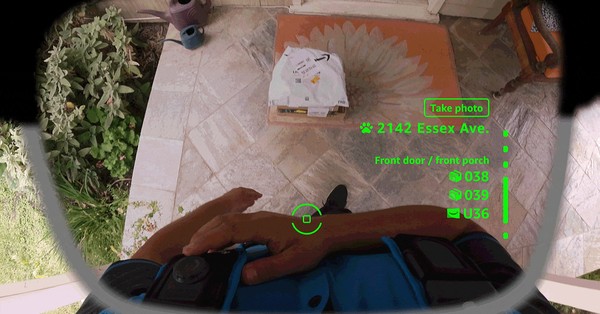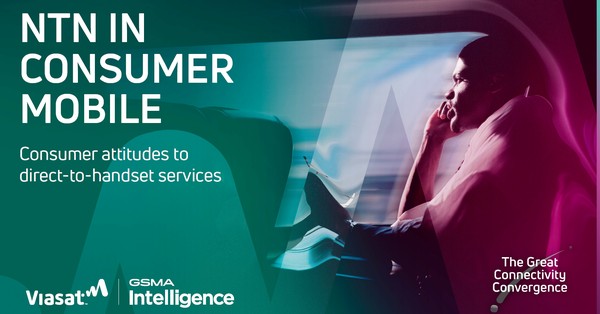Amazon AI smart glasses streamline last‑mile delivery
Amazon is piloting AI-enabled smart glasses for delivery associates to streamline last‑mile workflows, adding a hands‑free heads‑up display that blends navigation, scanning, and proof‑of‑delivery into the driver’s field of view.
Pilot features and hardware overview
The company is testing delivery‑specific smart glasses that use on‑device computer vision and AI to identify packages, surface hazards, and guide walking routes from the vehicle to the doorstep without requiring a phone in hand.
When a van is parked, the device activates and shows the next task: find the right parcel in the vehicle, traverse complex environments like multi‑unit buildings, and confirm delivery with visual capture.
The system includes a vest‑mounted controller with operational buttons, a swappable battery sized for a full shift, and a dedicated emergency function; the eyewear supports prescription and light‑adaptive lenses for all‑day use.
Amazon says hundreds of delivery associates shaped the form factor and user experience, and early results point to improved situational awareness by keeping eyes forward.
Planned capabilities and program context
Planned capabilities include real‑time defect detection to flag mis‑deliveries, adaptive responses to low light, and pet detection to reduce incidents at the door.
The glasses are part of a broader automation arc that also includes a new warehouse robotic arm (Blue Jay) for item handling and an AI operations layer (Project Eluna) for insight generation across facilities.
Pilots are underway in North America, with iterative refinements expected before any scaled rollout.
Impact on last‑mile safety, efficiency, and margins
Wearable AI moves from pilot to production when it demonstrably trims seconds per stop and lowers incident rates across dense, variable environments.
Hands‑free guidance improves safety and throughput
Hands‑free navigation and task prompts reduce “eyes down” time on phones, a known risk factor when moving through traffic, stairs, gates, and unfamiliar properties.
Even small per‑stop gains compound at scale, improving route adherence, reducing re‑attempts, and supporting consistent proof‑of‑delivery across seasonal peaks.
AR wearables mature for logistics workflows
Industrial wearables have matured from niche trials to targeted workflows in logistics and field service, aided by more efficient edge AI and better optics.
Amazon’s move signals that consumer‑grade UX and enterprise‑grade reliability can coexist when the workflow is narrow, high frequency, and well‑instrumented.
Architecture: on‑device AI, geospatial guidance, and edge
Delivering a dependable heads‑up experience requires tight orchestration of on‑device AI, geospatial services, and edge connectivity.
Local computer vision and AI inference
The glasses likely execute local CV tasks for latency and privacy, such as barcode recognition, package matching, and visual hazard cues, with periodic syncs to the cloud for model updates.
Geospatial guidance must blend GPS, vision‑based localization, and building‑level context to handle urban canyons and indoor dead zones.
Integration with routing and proof‑of‑delivery systems
To be useful, the device must link into route planning, stop sequencing, and proof‑of‑delivery systems, while honoring customer preferences like secure drop points or building access notes.
Error handling matters: ambiguous unit numbers, obstructed entrances, and missing access codes need clear escalation paths without breaking flow.
Connectivity and edge requirements for logistics AR
Smart glasses raise the bar on consistent, low‑latency connectivity and positioning from depot to doorstep.
Multi‑access networks and MEC offload
Uplink bursts for image capture and telemetry, plus low‑latency task synchronization, argue for resilient multi‑access: 5G/LTE on route and Wi‑Fi 6/7 at depots and lockers.
Mobile edge computing can offload heavier inference or map queries near urban clusters while keeping PII minimized; session continuity and policy enforcement should be handled via SD‑WAN or SASE.
Door‑level positioning and indoor navigation
GNSS alone is insufficient in apartments and mixed‑use complexes; enterprises should evaluate a blend of 5G positioning features, Bluetooth beacons, and vision‑based SLAM to improve door‑level accuracy.
Telcos can productize “address to door” services as part of private 5G or MEC bundles for logistics customers.
Device management and zero‑trust security
Glasses require enterprise mobility management, over‑the‑air updates, and eSIM provisioning with fallbacks to avoid work stoppages mid‑route.
Zero‑trust principles, data minimization on device, and encrypted media pipelines are table stakes given the presence of cameras in public spaces.
Risks, privacy, and adoption considerations
Operational wins depend on careful handling of privacy, reliability, and workforce adoption.
Privacy governance and compliance
Always‑on cameras demand strict governance: on‑device redaction, explicit use policies, clear retention rules, and opt‑outs in sensitive environments will limit legal and reputational risk.
Regulators are scrutinizing workplace AI; transparency and auditability of decision logic and event logs will be essential.
Ergonomics, durability, and uptime
Comfort, glare, and prescription support determine all‑day wear; hot‑swap batteries and IP‑rated durability keep uptime high in adverse weather.
Fail‑safes like an accessible emergency button and offline modes must be robust when coverage drops.
Model accuracy, bias, and human override
False positives on hazards or mis‑deliveries can erode trust; invest in continuous evaluation, bias testing across environments, and clear human‑override mechanisms.
How enterprises can pilot and scale AR wearables
Organizations in logistics, utilities, and field service can use Amazon’s move as a blueprint for targeted AR deployments.
Prioritize high‑ROI, measurable workflows
Prioritize scanning, navigation, inspection checklists, and proof‑of‑work where seconds per task and error reductions are measurable.
Run time‑boxed pilots with baseline metrics for safety incidents, re‑attempts, and stop time variability.
Engineer hybrid connectivity with private 5G and Wi‑Fi
Engineer hybrid 5G/Wi‑Fi coverage along routes and hubs, consider private 5G for depots and yards, and push latency‑sensitive functions to MEC where available.
Negotiate SLAs that prioritize uplink and coverage continuity during peak windows.
Establish ML data pipelines and feedback loops
Stand up data labeling, model versioning, and feedback loops from the field to improve detection accuracy; separate PII from operational telemetry by design.
Integrate with enterprise systems and enforce zero‑trust
Plan integrations with TMS/WMS, identity systems, and incident management; enforce zero‑trust access and least‑privilege for devices and services.
Signals to track over the next 12 months
Several signals will indicate how quickly AR wearables scale beyond pilots in logistics and adjacent industries.
Amazon platform openness and rollout
Monitor whether the company exposes APIs, enables third‑party apps, or keeps the stack closed; watch for expansion from select pilots to broader DSP fleets and new geographies.
Carrier bundles and regulatory standards
Expect growing carrier offerings that bundle private 5G, MEC, and indoor positioning for logistics; follow evolving guidance on workplace wearables and AI compliance in the U.S. and EU.
Metrics that validate AR at scale
Key metrics include stop time reduction, mis‑delivery rates, and safety incidents; sustained gains will validate the business case and shape procurement cycles for industrial AR across the sector.








































